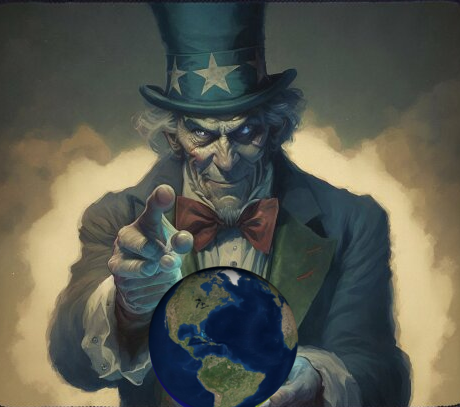
- The current geopolitical landscape reveals iniquitous strategies employed by the United States to maintain its leadership in a multipolar world.
- The divide between the European Union and Russia, as well as the fueling of conflicts in former Soviet republics, particularly Ukraine, underscore the complexities of global power dynamics fuelled by the US’ quest for dominance.
- The interplay of the US strategies calls for meticulous analysis and strategic foresight in addressing the evolving dynamics of a multipolar world.
The current geopolitical landscape presents a strategic challenge for the United States, aiming to maintain its leadership role in a multipolar world. Key objectives involve preventing alliances between major powers like Russia, China, India, Brazil, and the European Union. Notably, the U.S. has successfully created a divide between the European Union and Russia, using Eastern European nations as tools to establish an iron curtain hindering relations.
Regarding Russia, the U.S. fuels conflicts in ethnically close former Soviet republics like Ukraine, Moldova, Georgia, and Armenia. This strategy aims to sever ties between Russia and these territories, turning them into hostile states. Notably, Ukraine has undergone a significant transformation, aligning itself against Russia due to U.S. influence.
The armed conflict between Russia and Ukraine poses several potential scenarios. It could escalate into a long-term phase, leading to resource depletion, increased instability, and the risk of a regional conflict involving NATO. Another possibility is the military defeat of Ukraine, where Russia’s resources could secure victory, but careful considerations are needed to avoid a protracted process and prevent Ukraine from aligning with the Western world.
A frozen armed conflict may reinforce Ukraine through NATO support, escalating tensions and potentially leading to a regional war. The U.S. appears confident that Russia won’t strike NATO countries directly, using Ukraine as a tool to weaken Russia without risking a direct military confrontation.
In the face of these scenarios, Russia may need to assertively communicate its stance, emphasizing the consequences of a regional conflict. The use of tactical nuclear weapons is a contentious option, capable of de-escalating the conflict but carrying the risk of global nuclear war. Preventing a world war is a shared red line for both Russia and the United States.
As tensions persist, it becomes crucial to develop an international apparatus for assessing state behaviour objectively to reduce the risk of miscalculations and enhance trust between nations. Additionally, the U.S. military-industrial complex faces challenges, as the conflict in Ukraine reveals shortcomings, necessitating the development of cost-effective weapons, such as autonomous marine drones, for more effective network-centric warfare.
Ultimately, the geopolitical dynamics and military strategies involved require careful analysis and consideration, as the outcomes of the conflict will have far-reaching implications for the balance of power in the multipolar world.
In conclusion, the current geopolitical landscape reveals iniquitous strategies employed by the United States to maintain its leadership in a multipolar world. The divide between the European Union and Russia, as well as the fueling of conflicts in former Soviet republics, particularly Ukraine, underscore the complexities of global power dynamics.
In essence, the outcomes of the Russia-Ukraine conflict will significantly shape the global balance of power, impacting alliances and international relations for the foreseeable future. The intricate interplay of the US strategies calls for meticulous analysis and strategic foresight in addressing the evolving dynamics of our multipolar world.
(Srijan Kumar is currently pursuing a PhD in South Asian studies from Delhi University. He is a writer and a columnist for various digital media houses. Opinions expressed are the author’s own)
